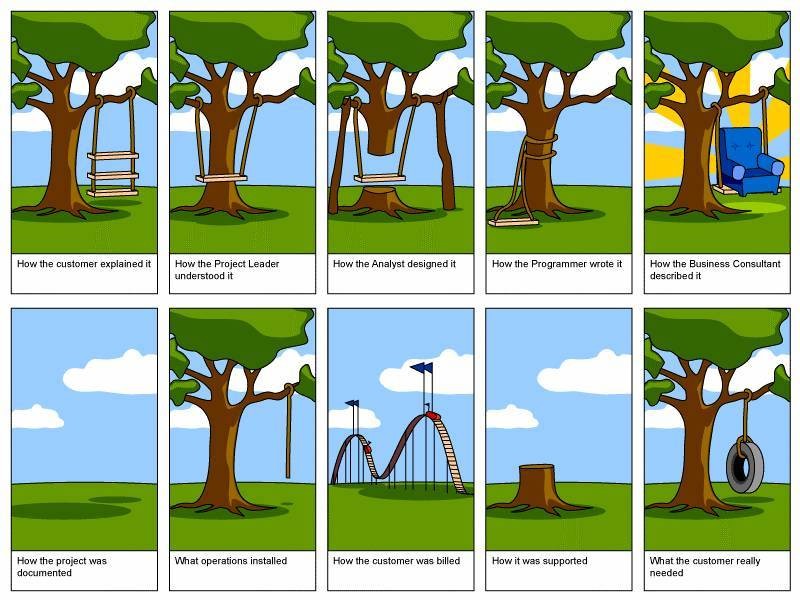From project initiation to delivery, expectations should be monitored and managed to ensure success. What are expectations, and who owns them? Expectations are a two-way street between the client and project team, brought together through clear and constant communication. Project expectations are the client’s vision of the results of the service or action provided. This can be stated or unstated. Either way, expectations are critical to project success.
A path to better managing project expectations
· Set clearly defined expectations
· Educate expectations
· Communicate and monitor expectations
· Execute processes for early feedback
1. Set Clear Expectations
Initial expectations can be (and should be) defined as part of the project initiation process. This is the time when the expected scope, high-level requirements and success factors are defined. The overall objective of the project is outlined in such a way that it is understandable to all involved.
Initiation documents define processes used throughout the project, including change processes, communication/project reporting processes, quality management, issue/risk management, development process and work plan. It establishes and defines a basis for understanding that can be used to communicate expectations.
During this phase, strong attention should be given to ensure that objectives follow the SMART rule of goal setting (Specific, Measurable, Attainable, Realistic and Time-bound.) While these will most likely change over the course of the project, the purpose is to define common processes, understandings and expectations.
2. Educate Expectations
Educate the client and the team on the agreed upon expectations and development processes as defined in the initiation documents. This way, each will know what is expected at the start of the project.
The conversions that happen as a result of the initiation process should lead both parties to a better understanding of expectations surrounding the project deliverable, process and overall results. Listening, empathizing with client’s business needs and indentifying the drivers behind the project will provide a better understanding of their expectations. Understanding and acknowledging client expectations communicates a commitment to the overall project.
3. Communicate and Monitor Expectations
Communication is key to monitoring expectations. Reporting on project accomplishments, issues and metrics will keep clients updated and involved in the project process. This will build client confidence and help ward off any unnecessary surprises.
Monitoring not only involves reporting on project status, but also engaging in constant listening and looking for feedback. Monitoring expectations requires listening, hearing and understanding the client’s business needs even if those needs are not apparent.
Communication paths between the client and the project team should be constant, as both parties need to be knowledgeable of the other’s expectations. Even the smallest decision needs can impact or refine expectations.
Expectations don’t stand still.
Periodically step out and check to make sure expectations are still lining up with the objectives. This involves communicating with both the client and team to ensure expectations are well aligned. When expectations do change, then a shift is needed to regain an understanding of the change and make the appropriate adjustments to ensure a successful project.
4. Execute Processes for Early Feedback
Several means can bring early feedback to the project. Early feedback can aid in clarifying and realigning project expectations. Building prototypes and/or pilot review sessions into the development process will bring to light issues and conversions at a time when changes are less costly and project impact is low.
Agile project process works to present and deliver project milestones in an incremental fashion. Clients get an early view of deliverables as they are completed, which allows them to review and input future concerns as needed.
Scrum methodology involves the client in defining which requirements will be worked and when, and lets clients reevaluate future requirements at the beginning of each Scrum cycle. Involving the client in this way helps set the expectation of the deliverable and creates excitement at being involved with developing something new. Instead of users being disappointed at the end of a project when the system doesn’t do what they expected, they have ownership in the process and become reassured that the project will meet the need.
What tips do you have for managing expectations? Are you doing anything different?

I really agree and enjoyed this read. People seldom plan to fail but just fail to plan….
I love the SMART acronym. As our firm is looking to redesign our application development team, we are looking at Agile. The more I look at agile, the more I see some benefits in deploying similar methodologies in IT infrastructure delivery. Do you know if there is a deployment methodology specific to IT infrastructure projects?
That’s a great question! There are some emerging initiatives in methodologies for IT infrastructure projects. Nicholas Weaver has written a great article (InfraScrum Agile Methodology Applied to Infrastructure Operations) on how he has adapted Agile/Scrum to IT infrastructure projects (http://nickapedia.com/?p=50 ).
Cisco has also published an IT development methodology (http://www.cisco.com/en/US/docs/voice_ip_comm/uc_system/UC5.0.1/system_description/SDmth.html)
And of course IT Infrastructure Library (http://www.itil-officialsite.com/AboutITIL/WhatisITIL.asp) offers a lot of best practices for IT management.